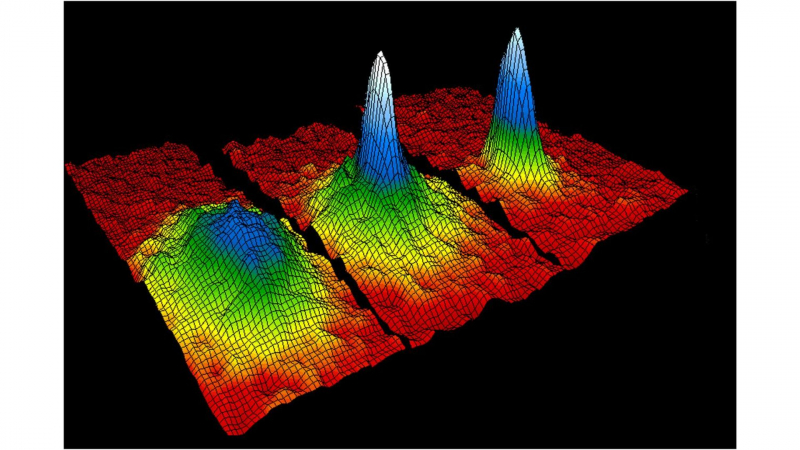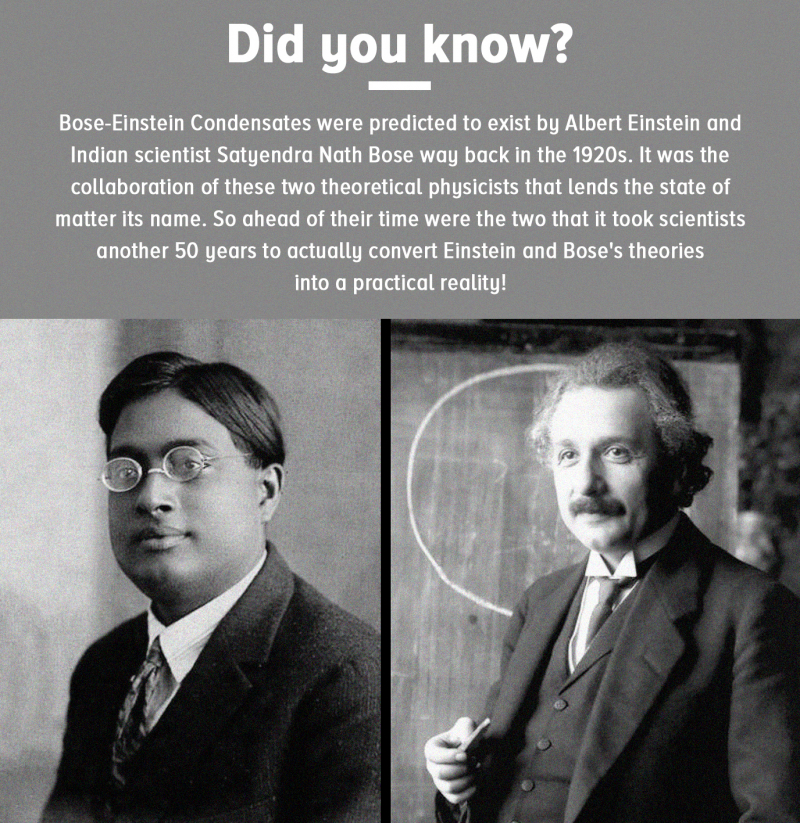He Collaborated With Bose To Predict The Existence Of Bose–Einstein Condensate
On a near-macroscopic scale, Bose-Einstein condensate (BEC) is a state of matter in which individual atoms or subatomic particles, when cooled to near absolute zero (0 K, 273.15 °C, or 459.67 °F; K = kelvin), coalesce into a single quantum mechanical entity—that is, one that can be described by a wave function.
In 1924, Einstein received a paper on a counting method from the Indian physicist Satyendra Nath Bose, assuming that light might be regarded as a vapor of indistinguishable particles. Einstein's German translation of the text was submitted to a journal. In conjunction with Bose, Einstein extended the concept to atoms, resulting in the prediction of the presence of the Bose–Einstein condensate phenomenon. The first such condensate was not created experimentally until 1995.
Only one month after the JILA experiment, a group led by Randall Hulet at Rice University announced the discovery of a lithium atom condensate. Because of the attractive interactions between lithium atoms, the condensate is unstable and collapses for all but a few atoms. Hulet's team later demonstrated that confinement quantum pressure could stabilize the condensate for up to 1000 atoms. Since then, several isotopes have been condensed.












